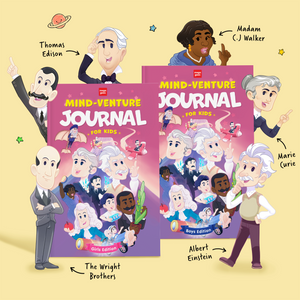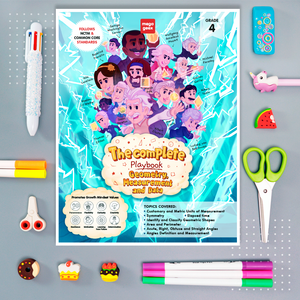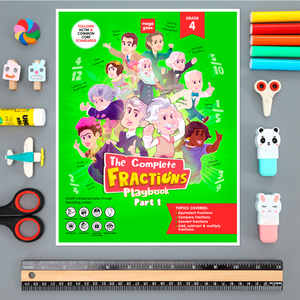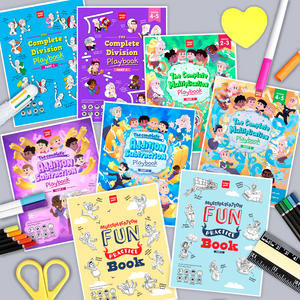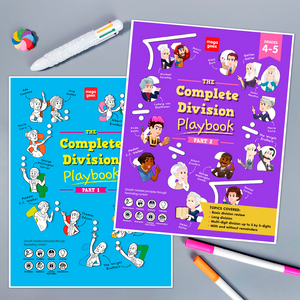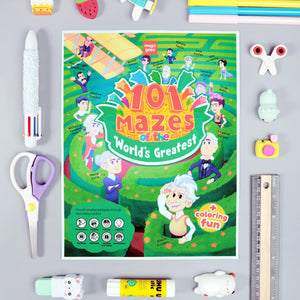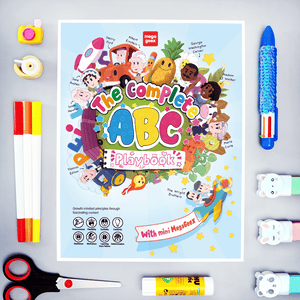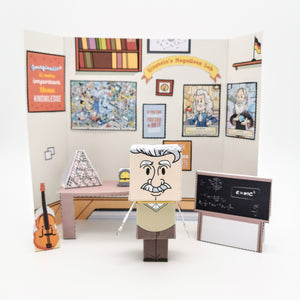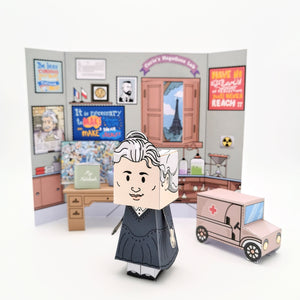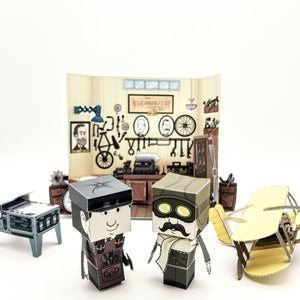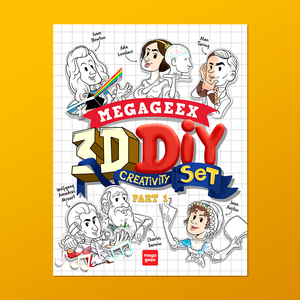Marie Curie for Kids: From a Curious Girl in Poland to a World-Famous Scientist
Did you know there's a woman scientist who was so amazing at her job that her notebooks from over 100 years ago are still too dangerous to touch? That's right - Marie Curie's research notebooks are kept in special lead-lined boxes in Paris, and anyone who wants to read them has to wear protective clothing! This isn't because she wrote down any scary secrets - it's because her discoveries were so powerful that they changed our world forever, from helping doctors treat cancer to powering spacecraft exploring distant planets. And she did all this while working in a leaky old shed that she called her laboratory!
- Born: November 7, 1867 (Warsaw, Poland, then part of Russian Empire)
- Died: July 4, 1934 (aged 66, Passy, France)
- Nationality: Polish, French
- Education: CNRS Flying University (Warsaw), University of Paris, ESPCI Paris
- Occupation: Physicist, Chemist, Professor, Researcher
- Best Known for: Discovery of radium and polonium, pioneering research on radioactivity, first woman to win a Nobel Prize, only woman to win Nobel Prizes in multiple sciences (Physics and Chemistry)
Table of Contents
- Early Life and Childhood
- Education and Early Interests
- Professional Career
- Major Achievements
- Personal Life
- Later Years and Legacy
- Fun Facts About Marie Curie That Will Blow Your Mind!
- FAQ About Marie Curie
- Inspiring Quotes from Marie Curie
- The Marie Curie Spirit: A Special Message for Young Scientists
Early Life and Childhood
A Polish Girl with Big Dreams
Maria Skłodowska (who would later become known as Marie Curie, and we'll call her Marie throughout our story) was born in Warsaw, Poland, on November 7, 1867. This wasn't the independent Poland we know today - it was controlled by Russia, and speaking Polish or teaching Polish history was actually against the law! Marie, nicknamed "Manya" by her family, was the youngest of five children, growing up with three sisters and one brother. Her world revolved around education thanks to her parents: her father Władysław Skłodowski, who taught mathematics and physics, and her mother Bronisława Skłodowska, who ran a prestigious girls' boarding school right in their home. Even when it was dangerous to do so, they made sure all their children understood the importance of learning.

Growing Up in a House of Learning
Even as a tiny girl, Marie showed signs of being extraordinary. At just four years old, she amazed everyone by teaching herself to read by watching her older sister Bronya's reading lessons. Her father loved science so much that he kept physics equipment in their home, and young Marie would stare at these mysterious tools for hours, dreaming about what they could do. She would often sneak into her father's study just to look at the fascinating instruments, even though she wasn't supposed to touch them.

Facing Early Challenges
But life wasn't always easy for young Marie. When she was only ten years old, her beloved mother passed away from tuberculosis. Just a few years later, her sister Zofia also died from typhus. Despite these heartbreaks, she threw herself into her studies even harder, following her mother's passion for education. She graduated from high school at 15 with a gold medal, showing everyone just how brilliant she was.

The Secret Flying University
Here's where the story gets really interesting - in the 1800s, women in Poland weren't allowed to go to university! Can you imagine being told you couldn't learn just because you were a girl? That's why Marie attended the "Flying University" (Uniwersytet Latający), a secret school that was literally "flying" because it had to keep changing locations to avoid being caught by Russian authorities. Classes were held in people's homes, and students had to speak in whispers. They hid their books under their clothes or in shopping baskets, and if they heard authorities coming, they had to pretend they were just having a social gathering! The Flying University wasn't just about learning - it was an act of rebellion against unfair rules that kept women and Polish people from getting an education.

At school, Marie was always at the top of her class. She had an amazing memory and could recite long poems in both Polish and Russian. But what she loved most was science - especially when her teachers did experiments. Once, during a science demonstration, her eyes lit up so bright with excitement that her teacher predicted she would become someone very special in the world of science one day. How right that teacher would turn out to be!
Education and Early Interests
A Sisterly Promise
Have you ever wanted something so badly that you'd do almost anything to achieve it? That's exactly how Marie felt about getting an education. But there was a big problem—her family didn't have enough money to send both her and her sister Bronya to university in Paris, where women were actually allowed to study. So the sisters made a clever plan: Marie would work as a governess (a private teacher for wealthy families) and send money to help Bronya study in Paris. Then, once Bronya became a doctor, she would help Marie come to Paris to study too.
Life as a Young Teacher
For three years, Marie worked far from home at the Żorawski family estate, teaching their children.

The days were long—she taught from early morning until late afternoon, but that didn't stop her from studying on her own. Every night, after her students went to bed, she would stay up late reading advanced math and physics books by candlelight. She even started a secret school for the farm workers' children, teaching them to read and write in Polish, even though it was against the law!

Dreams and Heartbreak
Life as a governess wasn't always easy. She lived on very little money, often skipping meals to save up for her dream of studying in Paris. The wealthy family's son, Kazimierz Żorawski, fell in love with her, and she with him. But his family didn't approve of their romance because she was poor, which left Marie heartbroken. Instead of giving up, she focused even harder on her studies and her dream of becoming a scientist.
The Journey to Paris
Finally, in 1891, after years of saving money and helping her sister, it was Marie's turn to go to Paris! She took a 30-hour train ride in the cheapest seat possible, carrying nothing but a few clothes, her precious books, and an iron stove to keep warm.

When she arrived in Paris, she moved into a tiny attic room in the Latin Quarter—so small she could barely fit her bed and desk. It was freezing in winter and boiling in summer, but Marie didn't care. She was finally where she wanted to be!
Triumph at the Sorbonne
At the University of Paris (also called the Sorbonne), Marie worked harder than ever. She often studied so long that she forgot to eat. To save money on heat, she would wear every piece of clothing she owned while studying.

Despite all these challenges, she graduated first in her class with a degree in physics, and a year later earned another degree in mathematics—a remarkable achievement for anyone, let alone a woman in the 1890s!

Professional Career
Meeting Pierre Curie
Sometimes the most important moments in life happen by chance. In 1894, Marie was searching for a larger laboratory for her experiments when a friend introduced her to Pierre Curie, a brilliant French scientist. Pierre was already known for his important discoveries about crystals and magnetism, but what truly connected them was their shared love of science. During their first conversation about their research, they became so excited about their ideas that they completely lost track of time!

A Partnership in Science and Life
When Pierre and Marie got married in 1895, they didn't buy fancy rings—instead, they bought bicycles! They loved taking long bike rides into the French countryside, having picnics, and discussing their scientific ideas. Their wedding gift money didn't go toward furniture or dishes either—they used it to buy new laboratory equipment. Now that's dedication to science!
The Amazing Discovery
In 1896, Marie chose to study a mysterious type of energy that had recently been discovered in uranium rocks. What made this project special was that no one else thought it was very important—but Marie had a feeling it could be something amazing. She was right! Working in their famous "shed laboratory" (which was really just an old, leaky building with a glass roof), Marie and Pierre made an incredible discovery. They found two new elements that had never been seen before: polonium (named after Marie's home country of Poland) and radium (which means "ray" in Latin because it gave off light).
Dangerous but Important Work
The work was incredibly difficult. Marie and Pierre had to process tons of heavy rock to get tiny amounts of their new elements. Their laboratory was freezing in winter and boiling in summer. Their hands would become cracked and sore from stirring huge pots of material. What they didn't know was that the beautiful blue-green light coming from their discoveries was actually dangerous radiation. Back then, scientists didn't understand the risks of radioactive materials—Marie even kept a tube of radium by her bed because she loved its pretty glow!
Recognition and Triumph
In 1903, something extraordinary happened—Marie and Pierre, along with their colleague Henri Becquerel, won the Nobel Prize in Physics for their discoveries. This made Marie the first woman ever to win a Nobel Prize! But even after this amazing achievement, she kept working hard. When the University of Paris finally gave her husband a professor position, Pierre insisted that Marie get a job too—making her the first woman to teach at the university in its 650-year history!
Major Achievements
Becoming Madame Curie
1906 brought terrible sadness to Marie when Pierre was killed in an accident on a rainy Paris street. Though heartbroken, she took over his position as professor at the University of Paris, becoming the first woman to teach there. Students were amazed to hear her begin her first lecture at the exact sentence where Pierre had left off in his last class. Her dedication to science never wavered—in fact, it grew stronger.
A Second Nobel Prize
In 1911, Marie achieved something no one else had done before—she won a second Nobel Prize, this time in Chemistry! She had managed to isolate pure radium, proving beyond doubt that it was a new element. Imagine being so good at your job that you win the biggest prize in science not once, but twice! The glowing blue-green element she discovered would soon help doctors treat diseases in ways no one had thought possible.
The Little Curies Go to War
When World War I began in 1914, Marie Curie saw another way to use her discoveries to help people. She invented mobile X-ray units that could travel to wounded soldiers on the battlefield. These trucks were nicknamed "petites Curies" (little Curies). Marie didn't just send the trucks—she drove them herself! She also trained women to be X-ray operators, showing them how to use the equipment to find bullets and broken bones. By the end of the war, over a million wounded soldiers had been helped by her mobile X-ray units.
Building the Radium Institute
Perhaps one of Marie's greatest achievements was creating the Radium Institute in Paris. She turned down the money from her second Nobel Prize and asked that it be given to science instead. The Institute became a world-famous research center where scientists could work together to understand radioactivity and use it to help people. Even today, important cancer research continues at the institutes Marie Curie helped create.
The Price of Discovery
While Marie's work with radioactive materials led to amazing medical breakthroughs, we now know these materials were very dangerous. The same elements that could help cure diseases could also make people sick. Marie carried test tubes of radioactive materials in her pockets and stored them in her desk drawer, not knowing they could harm her. Her research notebooks are still radioactive today—scientists who want to study them have to wear protective clothing and sign special safety forms!
Personal Life
Beyond the Laboratory
Strip away the Nobel Prizes and famous discoveries, and you'd find Marie Curie tending to her garden in well-worn clothes, dirt on her hands, and a peaceful smile on her face. Unlike many wealthy scientists of her time, Marie kept her life simple. Her daughter Eve once wrote that her mother owned just two dresses—one for the lab and one for everywhere else.
A Scientific Family
The Curie household was anything but ordinary. Instead of bedtime stories about princesses and dragons, Marie's daughters, Irène and Eve, fell asleep to tales of scientific discoveries. Birthday presents often included crystal-growing kits or miniature laboratory sets. The family spoke not one, not two, but three languages at home—French, Polish, and the universal language of science!
Mother of Another Nobel Winner
Irène, Marie's older daughter, followed directly in her mother's footsteps. Like a scientific relay race, Irène and her husband Frédéric Joliot-Curie continued Marie's work in radioactivity. In 1935, they won their own Nobel Prize in Chemistry—making the Curies the first mother-daughter Nobel Prize winners in history! Meanwhile, Eve chose a different path, becoming a celebrated journalist and author who wrote the first biography of her remarkable mother.
Simple Pleasures
Despite her fame, Marie's greatest joy came from simple things. She loved:
- Long bicycle rides in the French countryside
- Growing flowers in her garden
- Swimming in the ocean
- Taking long walks while collecting interesting rocks
- Playing card games with her daughters
Her laboratory notebook once had a pressed flower between its radioactive pages—a reminder that even the world's most famous scientist took time to appreciate nature's beauty.
The Working Mother
Marie pioneered more than just scientific discoveries—she showed the world that women could be both brilliant scientists and devoted mothers. During summer breaks, she created what she called a "cooperative"—hiring tutors to teach a group of scientists' children, including her own, while the parents worked. She turned education into a community effort, just as she approached her scientific work.
Later Years and Legacy
The Lasting Light of Discovery
Growing older didn't slow Marie Curie down—if anything, it made her work harder. Even as her health began to fail from years of exposure to radiation (which no one understood was dangerous at the time), she continued making breakthrough after breakthrough. In her final years, she watched with pride as her daughter Irène continued her research, while laboratories worldwide used her discoveries to help sick people.
Creating New Paths for Women
While Marie's laboratory in Paris was filled with glowing tubes of radium, something else was glowing too—hope in the hearts of young women who dreamed of becoming scientists. Before Marie, many universities wouldn't even allow women through their doors. By the time she finished her career, she had trained numerous female scientists from around the world. Today, women in lab coats barely raise an eyebrow, but in Marie's time, every woman in science was breaking new ground.
Modern Magic from Marie's Work
Marie Curie's discoveries continue to change lives today in ways that would have amazed even her:
- Doctors use radiation therapy to treat cancer, saving millions of lives
- Space rovers exploring Mars carry instruments that use her discoveries
- Smoke detectors in our homes work because of principles she helped uncover
- Scientists use radioactive dating to determine the age of ancient objects
- Nuclear medicine helps doctors diagnose illnesses without surgery
The Final Chapter
Marie Curie died on July 4, 1934, in a sanatorium in the French Alps. The cause was aplastic anemia, likely caused by long-term exposure to radiation. But even in her final days, she was still excited about science—her last letter was about an experiment she wanted to finish.
A Gift That Keeps Giving
In 2014, eighty years after Marie's death, Polish scientists discovered that the ionizing radiation techniques she developed could be used to preserve ancient books and manuscripts. Imagine that—the woman who loved to read so much as a child is still helping to save books today! Her legacy lives on in unexpected ways, proving that great discoveries, like radium itself, continue to glow long after they're first made.
Did You Know...?
- The radioactive materials Marie worked with glowed with an eerie blue-green light. She kept tubes of radium next to her bed because she loved their mysterious glow!
- She carried test tubes of radioactive material in her pocket as if they were precious gems—something we now know was very dangerous!
- Marie and Pierre used their Nobel Prize money to buy better laboratory equipment and hire assistants for their research instead of spending it on themselves.
Super Science Facts
- Marie had to process 8 TONS of pitchblende ore (that's heavier than an elephant!) to get just one tiny gram of radium.
- The element Curium was named after both Marie and Pierre Curie in 1944. It's used today in space exploration!
- Her research papers are still so radioactive today that they must be kept in lead-lined boxes, and scientists need to wear protective clothing to read them!
Amazing Life Stories
- During World War I, Marie learned to drive and repair cars so she could operate the mobile X-ray units herself. She created a fleet of 20 mobile X-ray vehicles and trained 150 women to be X-ray operators!
- She sold her Nobel Prize gold medals during World War I to help fund the war effort.
- Before becoming famous, she taught at a secret school for girls because women weren't allowed to go to university in Poland.
Record-Breaking Marie
- As of 2024, she is still the only person to win Nobel Prizes in two different sciences (Physics and Chemistry).
- She and her daughter Irène became the first mother-daughter Nobel Prize winners in history!
- Her daughter Eve was the only one in the family who didn't become a scientist—instead, she became a war correspondent and wrote her mother's famous biography.
Strange But True
- Two chemical elements (Polonium and Radium) were named after Marie's discoveries, and scientists also named the unit of radioactivity (the curie) after her and Pierre.
- Her laboratory notebooks will remain radioactive for 1,500 years! Anyone who wants to study them must wear protective clothing.
- In 1995, Marie and Pierre's remains were moved to the Panthéon in Paris—she was the first woman to be placed there for her own achievements!
Did Marie Curie's work make her radioactive?
Yes! Marie Curie's body became radioactive from her work with radium and polonium. In fact, her research papers and personal belongings are still radioactive today and will be for thousands of years. Scientists who want to study her notebooks must wear protective clothing and sign special safety waivers.
Why are Marie Curie's papers still radioactive but we can use X-rays safely in hospitals?
The radiation from medical X-ray machines can be turned on and off, like a flashlight. But the radium and polonium Marie worked with are naturally radioactive elements that keep giving off radiation for thousands of years. She carried these materials in her pockets and kept them in her desk without knowing they were dangerous.
What happened to Marie Curie's daughters?
Both of her daughters had remarkable lives! Irène followed in her mother's footsteps and won a Nobel Prize in Chemistry with her husband. Eve became a famous journalist, pianist, and writer who traveled the world and wrote the first biography of her mother. She also worked for UNICEF and helped children around the world.
Did Marie Curie really learn to read at age 4?
Yes! She taught herself by watching her older sister's reading lessons. Her father noticed her reading the newspaper one day and couldn't believe his eyes—she had learned all by herself!
How rich did Marie Curie become from her discoveries?
Despite her famous discoveries and Nobel Prizes, Marie Curie never became rich. She gave away most of her prize money to science and education. She believed scientific discoveries should belong to everyone, so she never patented her radium-purification process. This decision allowed hospitals worldwide to use her discoveries to help people without paying expensive fees.
What languages could Marie Curie speak?
Marie could speak Polish (her native language), Russian (required in school), French (learned for university), German (for scientific papers), and English. She learned English later in life when she visited America!
Why did she change her name from Maria to Marie?
When she moved to France, Maria Skłodowska adopted the French version of her name, becoming Marie, to better fit into French society. However, she proudly kept her Polish surname when she married, becoming Marie Skłodowska-Curie.
Did Marie Curie have any hobbies besides science?
Yes! Besides her famous love of cycling, she enjoyed hiking in the mountains, taking photographs, and gardening. She had a special interest in growing potatoes and kept detailed notes about her garden just like she did with her experiments!
How did Marie Curie's discoveries change medicine forever?
Her work with radiation led directly to the development of X-rays for looking inside the body and radiation therapy for treating cancer. During World War I, her mobile X-ray units helped over a million wounded soldiers. Today, millions of cancer patients receive treatments that were made possible by her discoveries.
Why do some people call her the "Mother of Modern Physics"?
Marie Curie's research on radioactivity helped scientists understand that atoms, which were thought to be the smallest particles, could actually be split into smaller pieces. This led to a completely new understanding of physics and chemistry, revolutionizing how we think about matter and energy.
Did Marie Curie face any gender discrimination?
Yes, Marie Curie faced significant gender discrimination throughout her career. When she was nominated for the French Academy of Sciences, she was rejected because she was a woman, despite her scientific achievements. However, she persevered and became a trailblazer for women in science.
Why didn’t Marie Curie patent her radium discoveries?
Marie Curie believed that scientific discoveries should benefit humanity, not personal wealth. She intentionally chose not to patent her radium-purification process, allowing scientists and doctors around the world to use it freely for medical research and treatment.
-
"Nothing in life is to be feared, it is only to be understood. Now is the time to understand more, so that we may fear less."
This is one of Marie's most famous quotes! She believed that when we learn about things that seem scary or mysterious, they become less frightening. She wanted people to face challenges with curiosity instead of fear. -
"One never notices what has been done; one can only see what remains to be done."
Marie said this after winning her first Nobel Prize. Even after such a huge achievement, she was already thinking about her next scientific discovery. It shows how she was always looking forward, ready for the next challenge! -
"I was taught that the way of progress was neither swift nor easy."
Marie wrote this in her autobiography, remembering how long and hard she had to work for her discoveries. She wanted people to know that important work takes time and patience. -
"Humanity needs practical men, who get the most out of their work, and, without forgetting the general good, safeguard their own interests. But humanity also needs dreamers, for whom the unselfish following of a purpose is so imperative that it becomes impossible for them to devote their care to their own material profit."
She wrote this about scientists who work for the good of everyone, not for money. This is exactly how she lived her own life—she never patented her discoveries because she wanted them to be freely available to help people. -
"Be less curious about people and more curious about ideas."
Marie often said this to her students. She believed it was more important to focus on learning and discovering new things than to gossip or worry about what others were doing. -
"In science, we must be interested in things, not in persons."
Similar to her previous quote, Marie wanted people to focus on the work and discoveries themselves rather than who made them. She believed science was about finding truth, not becoming famous. -
"I have frequently been questioned, especially by women, of how I could reconcile family life with a scientific career. Well, it has not been easy."
Marie wrote this in her diary, being honest about the challenges of being both a mother and a scientist. She wanted other women to know it was possible, even if it wasn't always easy.
Marie Curie's amazing story teaches us something very special: it's not about being born brilliant—it's about being curious, determined, and brave enough to keep trying even when things get tough.
Think about it:
- She wasn't born knowing about radioactivity—she learned by studying hard.
- She didn't succeed right away—she did thousands of experiments.
- She wasn't afraid to be different—she followed her dreams when most girls weren't allowed to.
- She never stopped learning—even after winning Nobel Prizes, she kept asking questions.
- She didn't let failures stop her—she saw them as steps toward discovery.
Marie once wrote in her diary: "I was taught that the way of progress was neither swift nor easy." What she meant was that doing great things takes time and effort—and that's completely OK! Every scientist, inventor, and explorer started just like you: with curiosity and questions.
So the next time you find something difficult—whether it's a math problem, a science experiment, or learning something new—remember Marie Curie in her leaky shed-laboratory, stirring huge pots of minerals, trying again and again until she made one of the biggest discoveries in history. Remember that she started out just like you, as a curious child who loved to learn.
Marie Curie showed us that with determination, hard work, and curiosity, one person really can change the world. Maybe that person will be YOU!

